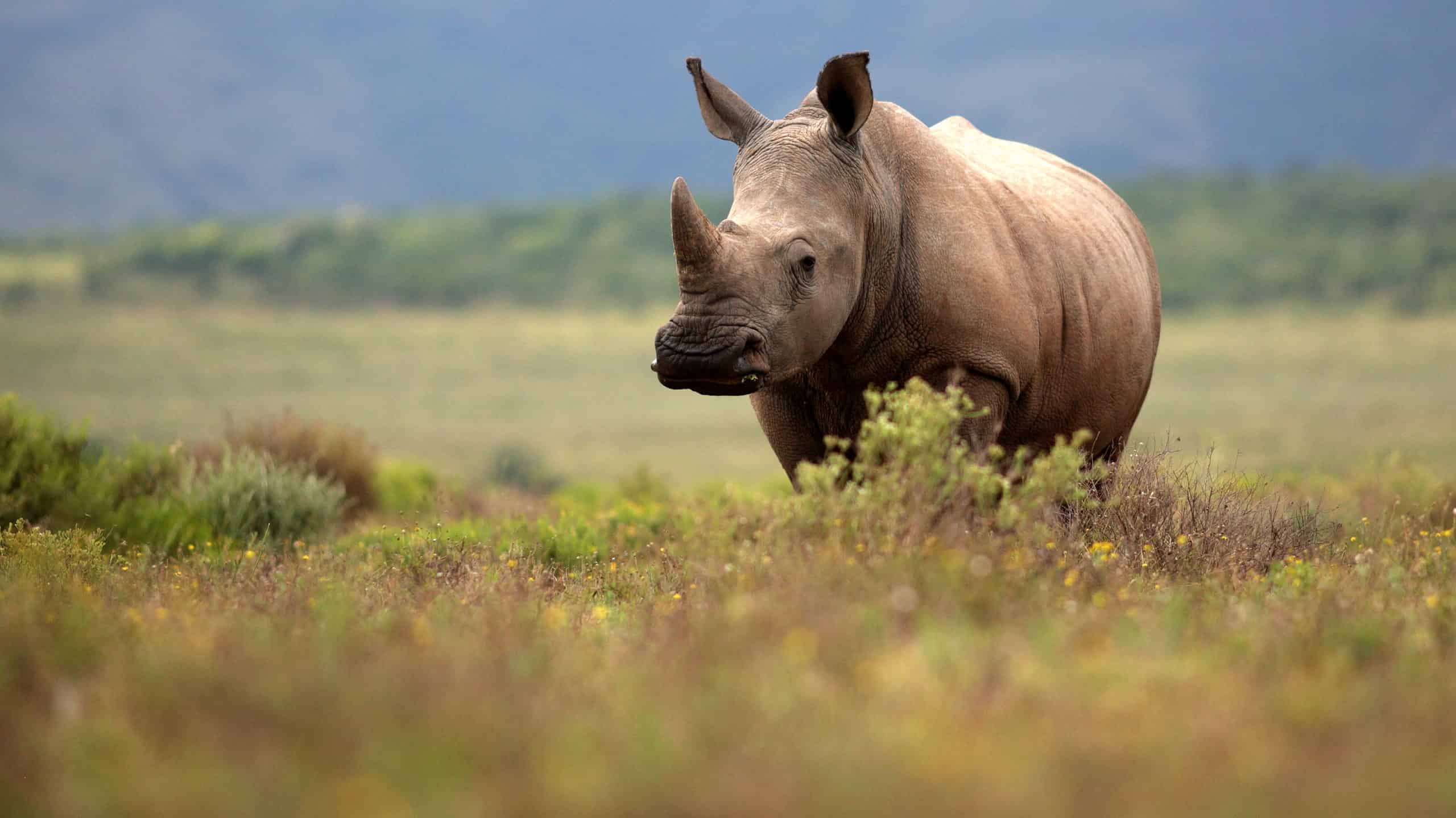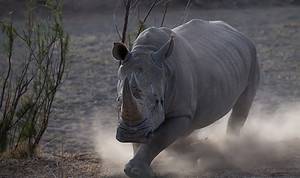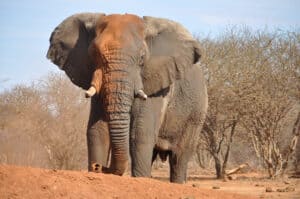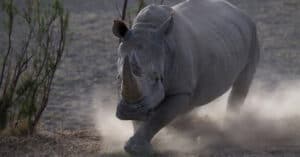What animal is easily sunburned and has nose hair worth half a million dollars? That would be the rhinoceros. Even though their 2-inch-thick skin can stop low-caliber bullets, it burns easily because the blood vessels are close to the surface. And that nose hair? It’s a horn that grows up to 4.5 feet long and sells on the black market for $60,000 a pound! With so much money riding on their noses, rhinos have been heavily poached and are in danger of extinction. So, what are the countries where the most rhinos live and how are they doing there? Read on to find out.

Meet the Rhinoceros
Here are a few key points summarizing what you need to know about the rhinoceros:
- They’re big. 8-13 feet long, 5-7 feet tall at the shoulder, and can weigh four tons.
- They are herbivores. They graze 10 hours a day and eat toxic plants that would kill other animals.
- They can go four to five days without water.
- They’re known for an unpredictable temperament: sometimes calm and curious, other times aggressive.
- Most species are loners, but white rhinos may travel in groups of 14 or so.
- The plural of rhinoceros is not rhinoceri. Standard usage is rhinoceroses or rhinoceros (the same as the singular).
- Humans are the only predators that can take on an adult rhino. Lions and other carnivores kill the babies when they can separate them from their mothers.
- The red-billed oxpecker is a bird that eats parasites from the rhino’s back, but also pecks at sores to drink blood.
- There used to be over 100 species of rhinos but only five remain today, with about 27,000 animals altogether.
- If allowed to live out a full lifespan they live 35-50 years in the wild.
Rhino Habitat
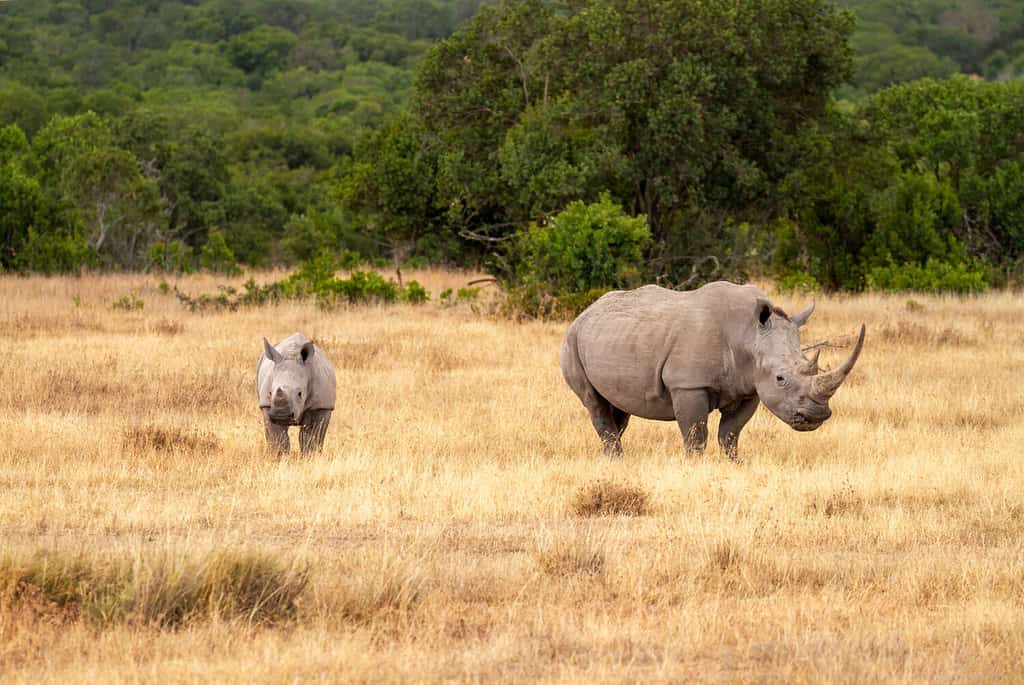
Rhinoceroses can live in diverse habitats. They are not picky about diet: almost any kind of plant will do.
©Nicola_K_photos/Shutterstock.com
Rhinoceroses live in a variety of habitats depending on their species and the part of the world they live in. They survive in everything ranging from deserts to shrublands, savannas, and grasslands, to tropical rainforests. Most of the remaining specimens in the world live in national parks and animal reserves. They have strong stomachs and can digest even toxic plants that might kill another creature. Rhinos feed on fruit, grasses, roots, leaves, twigs, and any other vegetable matter they can find.
Countries With the Most Rhinos
Where Do Rhinos Live?
There are five species of rhinoceros in the world today. Most live in Africa and the countries where the most rhinos live are South Africa, Namibia, Zimbabwe, and Kenya.
- The Sumatran rhino (47 remaining) and the Javan rhino (76 remaining) live in Indonesia.
- The greater one-horned rhino (6,500 remaining) lives in India and Nepal.
- The black rhino (6,500 left) and white rhino (17,000 left) live in southern and eastern Africa.
Rhinos in South Africa
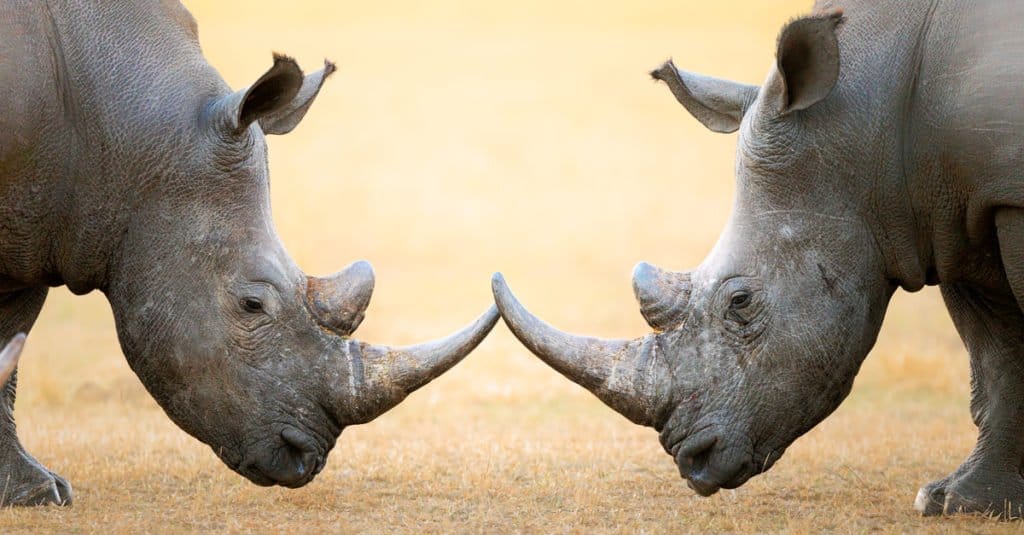
These white rhinos in Kruger National Park are part of the largest rhino population left in the world.
©iStock.com/johan63
According to the International Rhino Foundation, 2,065 black rhinos and 12,968 white rhinos live in South Africa, totaling about 15,000 animals. This is more than half the total rhinoceros population in the world. Kruger National Park has the largest rhino population, but it is far from a safe haven. Of the 448 rhinos poached in the country in 2022, tragically 124 of them were killed in Kruger. The main reason for this is that the park is surrounded by impoverished communities and borders Mozambique, a less-prosperous country.
In 2023 Platinum Rhino Farm, a refuge for 2,000 white rhinos, went up for auction. An NGO known as African Parks was able to purchase it and will relocate the rhinos all over Africa to try to reestablish the species in places where it has gone extinct.
Rhinos in Namibia
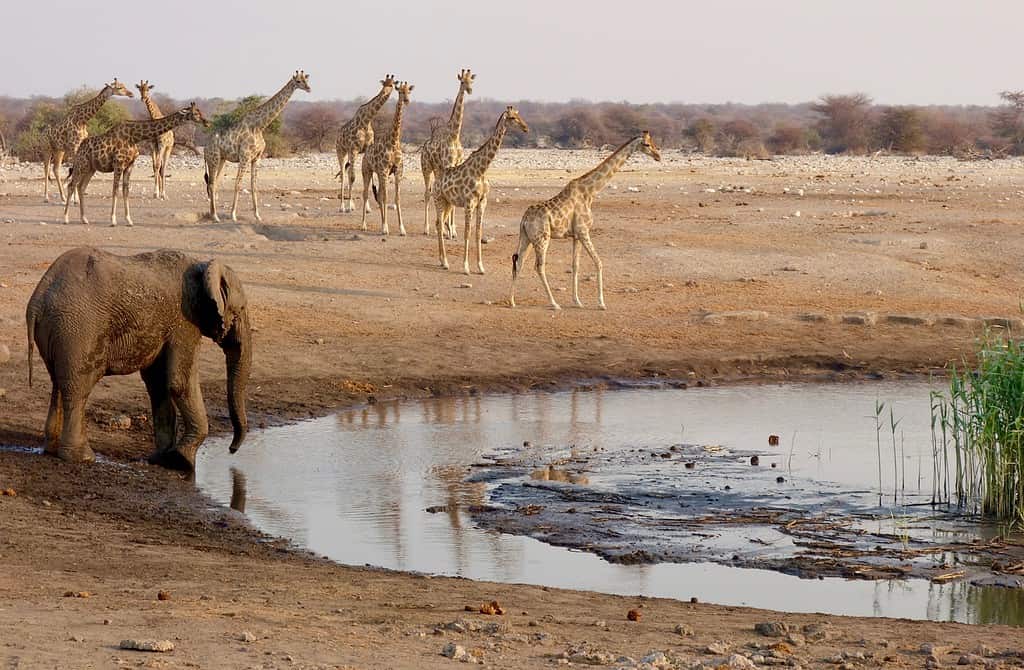
Etosha National Park has plentiful watering holes that attract rhinos and other iconic African species.
Namibia has about 3,390 rhinos. This number includes the largest population of black rhinos and the second-largest population of white rhinos on the continent. One of the best places to see them is Etosha National Park, where there is a huge salt pan that fills with water in the rainy season and attracts numerous birds and animals.
The Ministry of Environment, Forestry, and Tourism is responsible for wildlife conservation in Namibia. In areas where poaching is particularly active, the MEFT relocates rhinos to safer areas or dehorns them to deter poachers. Wildlife officials also insert satellite tracking devices into their horns or put ankle bracelets on them to monitor their movements and well-being.
Rhinos in Zimbabwe
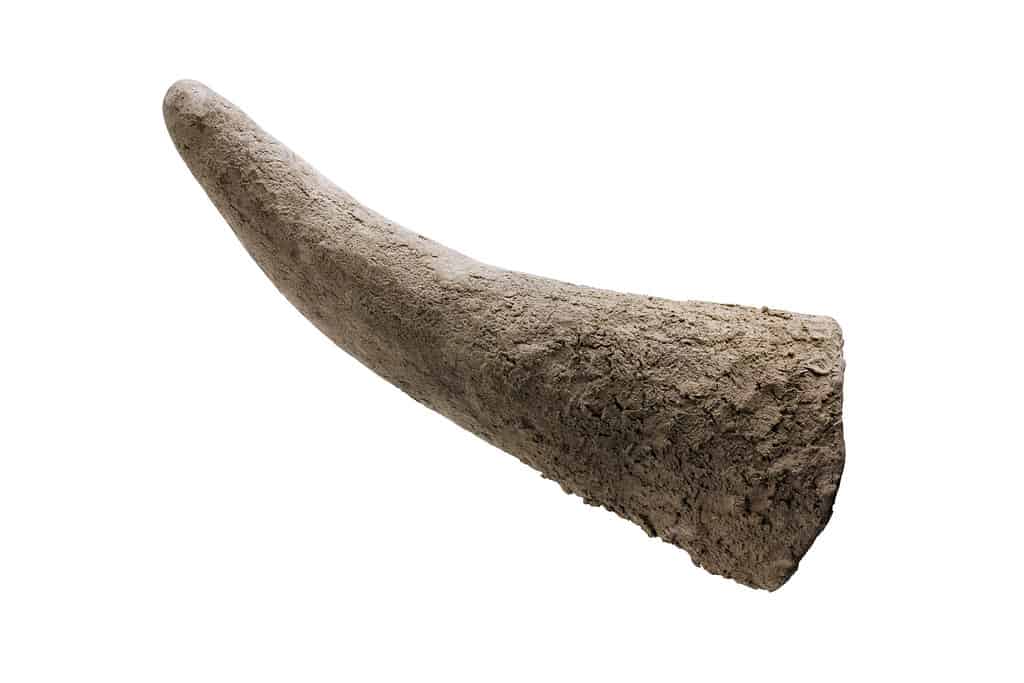
In an impoverished country like Zimbabwe, the extreme value of rhino horns drives intensive poaching.
©Etienne Outram/Shutterstock.com
Zimbabwe has the fourth-largest population of Black Rhinos in the world, with 616 animals. An additional 417 white rhinos live there. Conservation in Zimbabwe is especially challenging because of the country’s economic challenges. The World Bank reports that most of the country’s population lives in “extreme poverty.” The extreme value of rhino horns on the black-market drives poaching in the country. An estimated 58 rhinos a year are killed in Zimbabwe.
Conservation efforts seem to be bearing fruit, though. In 2022 the rhino population in Zimbabwe passed more than 1,000 for the first time in 30 years. The International Rhino Foundation credits this success to “intensive protection, monitoring, and management” of the rhino population by wildlife authorities and NGOs.
Rhinos in Kenya
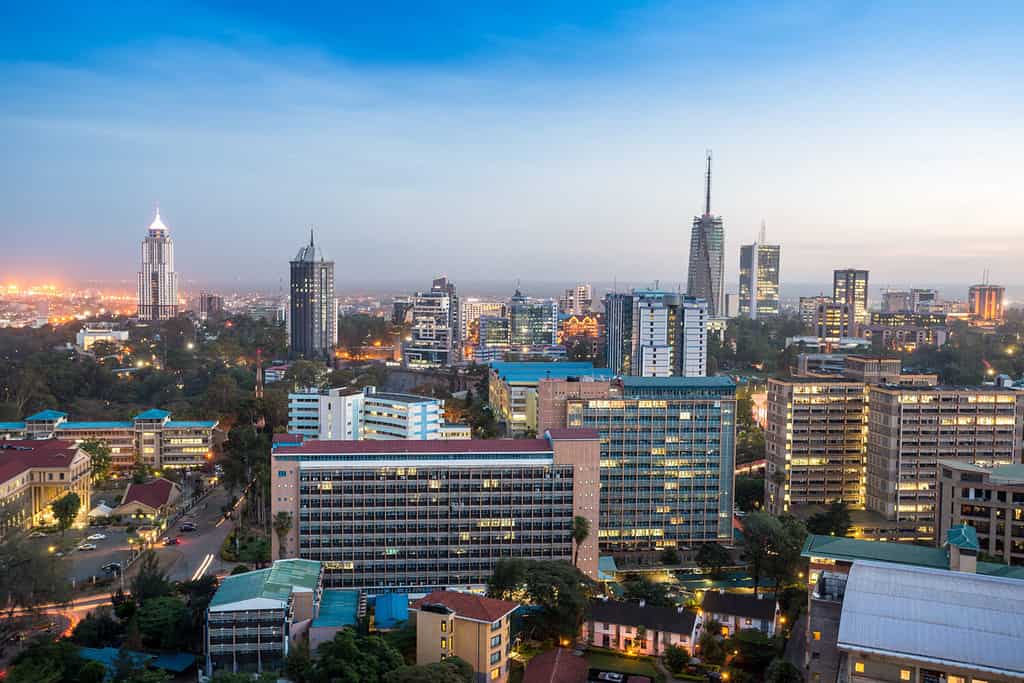
Development within Kenya compromises wildlife habitat but increases funds available for conservation.
©Sopotnicki/Shutterstock.com
Kenya is the 4th wealthiest country in Africa and ranks 66th in the world. It has a growing economy and is considered today a middle-income country. Development is a double-edged sword. A rapidly developing country needs a lot of natural resources. Mining, timbering, and growing agricultural enterprises compromise the habitat of wildlife. Industrialization and increasing car ownership also damage the ecosystem. On the other hand, as a country urbanizes and provides more industrial jobs, birth rates tend to go down, incomes go up, and tax revenues give the country more resources for all sorts of programs, including animal conservation.
In Kenya, conservation trends for rhinos have not been good, until recently. In the 1960s, the black rhino population was about 20,000 but in just 20 years’ time, poachers decimated them to fewer than 300. But as a result of intensive conservation efforts, that number has doubled to more than 600 today. In fact, in 2022 the number of poached rhinos was . . . zero! That’s the second time in three years Kenya successfully protected all its rhinos. With so much bad news about rhino conservation around the world, Kenya’s success is a great model and a welcome sign of hope.
How Can You Help Rhinos?
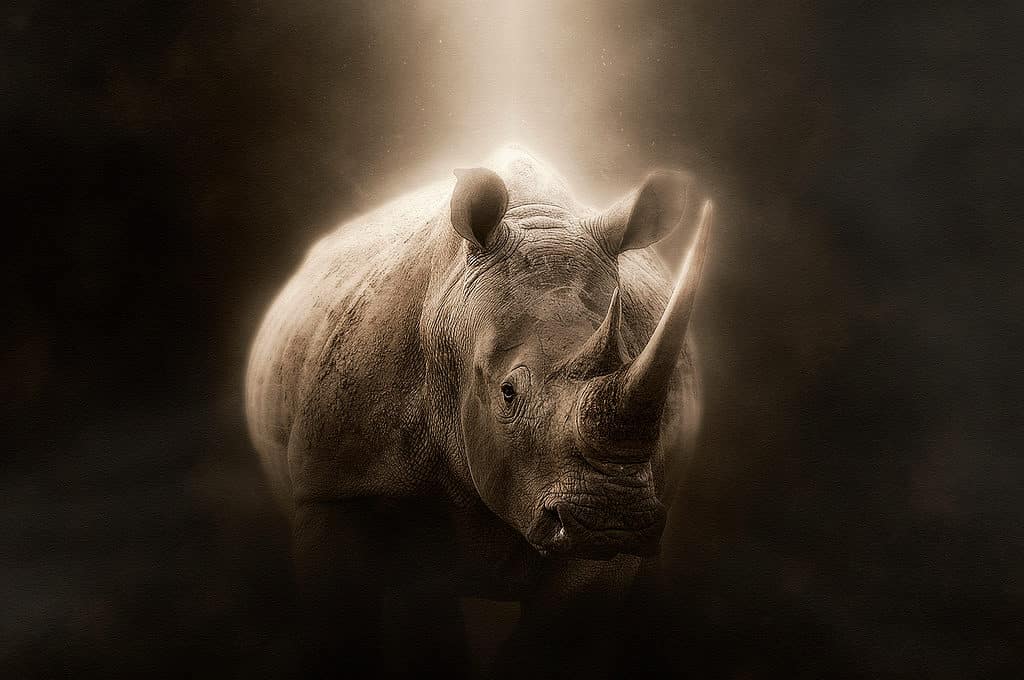
Rhinoceroses are a unique species. Losing them would leave a big hole in the world’s tapestry of wildlife.
©Pornchanok Anukoolprasert/Shutterstock.com
If you are concerned about the precarious state of rhinos around the world, here are some ways you can help conserve them:
- Research and donate to reputable wildlife conservation organizations.
- Learn as much as you can about the species and share what you learn with others to raise their interest.
- Take an ecotourism vacation to a rhino habitat, where you can observe rhinos and put tourist dollars into the local economy. This creates an incentive for local people to value rhinos more alive than dead.
- Reach out to government leaders in your own country and in countries where rhinos live to urge funding for wildlife conservation efforts.
- Donate to microfinance organizations like Kiva.org that provide small business loans to budding entrepreneurs in developing countries. As more jobs are available and local economies improve, incentives to poach wildlife decrease.
Thank you for reading! Have some feedback for us? Contact the AZ Animals editorial team.

